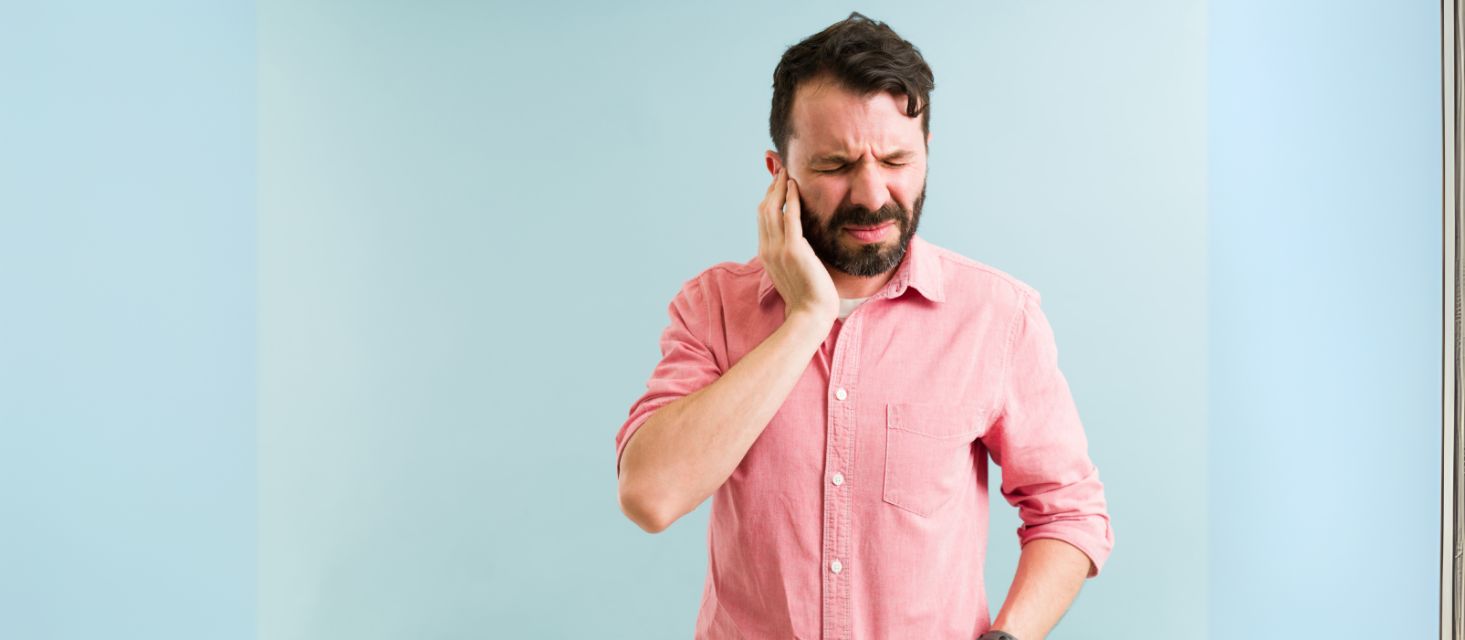If you’ve ever experienced a blockage of the ear that left you feeling off-balance or struggling to hear, you might have wondered if ear irrigators could help. Ear wax, a normal body secretion, plays a vital role in providing protection against infection and dust particles, but sometimes it builds up excessively, causing discomfort, ringing in the ears (also known as chronic tinnitus), or even temporary hearing loss.
This page examines whether ear irrigators can aid in alleviating hearing loss, explains how ear irrigation works, and outlines what you can expect during the procedure.
What is Ear Irrigation?
Ear irrigation is a method used to remove excess ear wax from the ear canal. It involves using warm water, which is gently squirted into your ear to dislodge and flush out the wax. The process can be done at home using devices like the Auracle Eddy or performed by a healthcare professional.
According to a study published in Nursing journal, while ear irrigation is generally safe, improper technique or using too much pressure can lead to complications such as irritation of the delicate skin inside the ear or perforation of the eardrum. Therefore, it's crucial to follow proper guidelines and consult a professional if you have underlying conditions like a perforated eardrum or recent ear surgery.
Ear irrigation is particularly effective when the ear is completely blocked by wax. However, it’s important to take precautions to avoid damage to the ear, especially if you have a history of perforated eardrum or surgery to your ears. For a detailed guide on this process, check out our ear irrigation guide.
Can Ear Irrigators Help with Hearing Loss?
Excessive wax buildup can block the ear canal, leading to reduced hearing. In such cases, removing the blockage through irrigation can restore hearing. However, if hearing loss is due to other factors, such as chronic tinnitus, middle ear infections, or damage to the eardrum, ear irrigation may not be the solution.
If you wear a hearing aid, it’s advisable to consult your audiologist before attempting ear irrigation, as wax buildup can affect hearing aid performance. Learn more about symptoms and treatments for earwax blockage in our earwax blockage guide.
How to Prepare for Ear Irrigation
-
Apply Olive Oil Drops: A few days before the procedure, applying olive oil drops can soften the wax, making it easier to remove.
-
Remain Lying with the Affected Ear Uppermost: This position helps the oil penetrate the wax and reach the deeper parts of the ear canal.
-
Consult Us Before the Procedure: If you have a history of ear infection, perforation of the ear, or a cleft palate, speak to a healthcare professional to determine whether irrigation is safe.
What to Expect During Ear Irrigation
-
Warm Water at Body Temperature: To avoid dizziness, the water should be at body temperature.
-
Gentle Irrigation: The water is carefully squirted into the ear canal to loosen the wax.
-
Flushing Out the Wax: Dislodged wax is flushed out, relieving the blockage.
During the procedure, avoid using buds to clean inside your ears, as they can push the wax further into the canal and irritate the delicate skin inside.
Risks of Ear Irrigation
While ear irrigation is generally considered risk free, it’s not without potential complications:
-
Perforation of the eardrum: Using too much pressure or improper technique can cause perforation.
-
Irritate the Delicate Skin Inside: Excessive force or repeated procedures may damage the delicate skin inside the ear canal.
-
Infection: Though rare, irrigation can introduce bacteria into the ear, leading to acute and chronic infections.
If you experience pain or persistent ringing in the ears after irrigation, seek medical advice. You may also want to read about ear infections and how to recognise them.
When Not to Use Ear Irrigators
Ear irrigation is not recommended if:
-
You have a perforated eardrum.
-
You’ve undergone recent surgery to your ears.
-
You have an active ear infection.
-
Your eardrum and deafness issues are linked to structural problems.
Alternative Methods to Clean Inside Your Ears
For those who cannot undergo irrigation, there are other safe methods to maintain ear hygiene:
-
Olive Oil Drops: Regular use can prevent wax buildup.
-
Avoid Buds to Clean Inside: Cotton buds should not be used inside the ear canal as they can cause more harm than good.
-
Professional Cleaning: Consult an audiologist for manual wax removal.
To learn more about earwax removal methods, check out our article on the best methods to remove earwax.
Closing Insights
Ear irrigation can be an effective solution for those experiencing temporary hearing loss due to ear wax buildup. While it is generally safe, understanding when and how to use ear irrigators is essential to prevent complications like damage to the ear or infection acute and chronic. If you frequently experience wax blockages or chronic tinnitus, consider consulting a healthcare professional for tailored advice. Remember, your ears are delicate, and proper care is key to maintaining optimal hearing.
If you’re looking for a safe and efficient way to clean your ears at home, consider using the Auracle Eddy Ear Irrigator. Designed with precision and safety in mind, it helps remove wax gently without damaging the delicate skin inside the ear canal. Check out our product page for more information and to order your Auracle Eddy today!
FAQs
Is it good for your ears to drain?
Yes, draining excess wax and fluids from the ear is essential for maintaining ear health. It prevents blockages and reduces the risk of infections.
Can you make your ears hear better?
If hearing loss is caused by wax buildup, removing the wax through irrigation or other methods can improve hearing. However, if the cause is related to chronic tinnitus ringing, nerve damage, or issues with the middle ear, other treatments may be necessary.
Is ear irrigation successful?
Ear irrigation is highly effective in cases where the ear is completely blocked by wax. When performed correctly, it can restore hearing and relieve discomfort.
What to expect after ear irrigation?
After ear irrigation, you may experience slight sensitivity in the ear canal. Avoid exposing your ears to cold air and refrain from inserting objects inside the ear. If you feel dizziness or mild pain, it should subside within a few hours.







Share:
Related Blogs
Draining Fluid from the Ear: Causes, Solutions, and Prevention
Draining Fluid from the Ear: Causes, Solutions, and Prevention